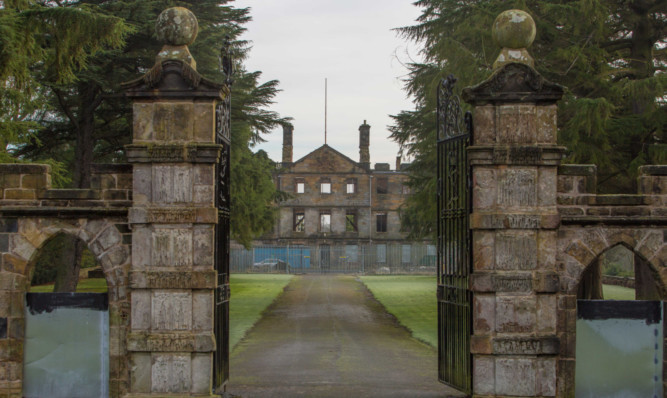The future of one of Fife’s most historic mansions has been left in limbo as it emerged its owners are working with the council to find a way to bring it back to its former glory.
The grade A listed Leslie House, which dates back to the 17th Century, has lain empty for many years and is included in the Buildings at Risk Register for Scotland after falling into a state of disrepair.
Hopes have been high in the past decade that Edinburgh-based firm Sundial Properties could yet convert Leslie House into luxury flats .
However, The Courier has learned Sundial is seeking a solution that would result in another developer taking on the ambitious project.
The company declined to make any further comment on Leslie House’s status at this time when approached by The Courier, but Mary Stewart, service manager at Fife Council, confirmed moves were ongoing behind the scenes.
“Following a very positive meeting in September with Sundial Properties and Historic Scotland, the owners submitted additional information to the council with a view to preparing a joint marketing/development brief,” she said.
“We are hoping that this will attract interest from a restoring purchaser and ultimately see the building brought back into use.
“The building is already included in the Buildings at Risk Register for Scotland and the register is a source for prospective restorers of redundant listed buildings.”
The news comes as the Scottish Government is considering an appeal by Muir Homes against Fife Council’s decision to reject plans to build 28 houses in the grounds of Leslie House.
Councillors knocked back the proposal because of a failure to include an “enabling development” clause that would require profits from house sales to be used to fund a restoration project for the mansion itself.
That element had previously been agreed for an original planning application for 12 houses but was left out of the revised one.
The original Leslie House was home to the Earls of Rothes but was destroyed by fire in 1763.
The existing building was created on the same site in the 18th century and, after being purchased by Sir Robert Spencer Nairn in 1919, was donated to the Church of Scotland in 1952 to be used as an eventide home.
After money problems forced the Kirk to close the home in 2003 the building fell into disrepair until Sundial stepped in with plans to redevelop it, saying it would stay true to the mansion’s original character throughout the process.
However, that blueprint was significantly set back when fire ripped through the house in February 2009.
